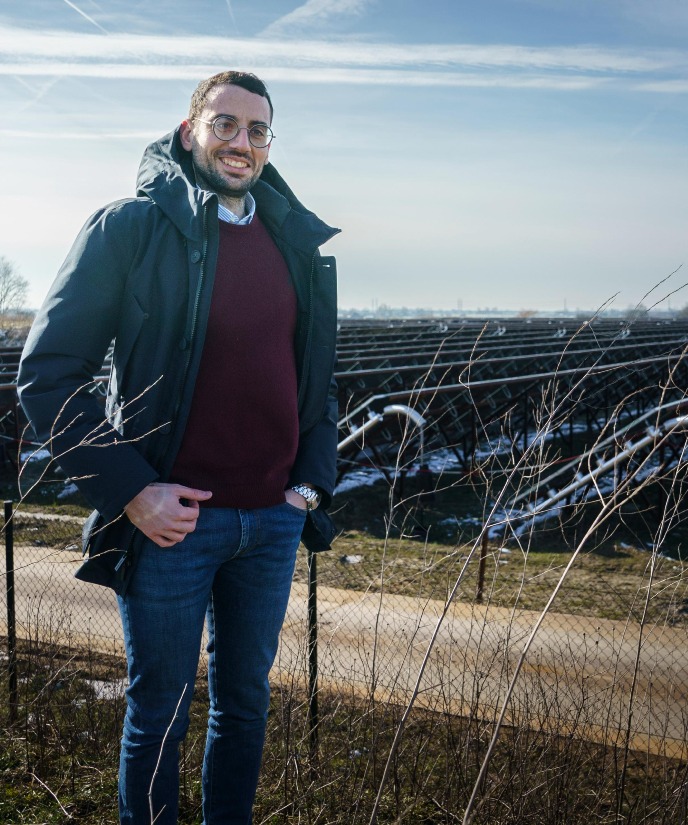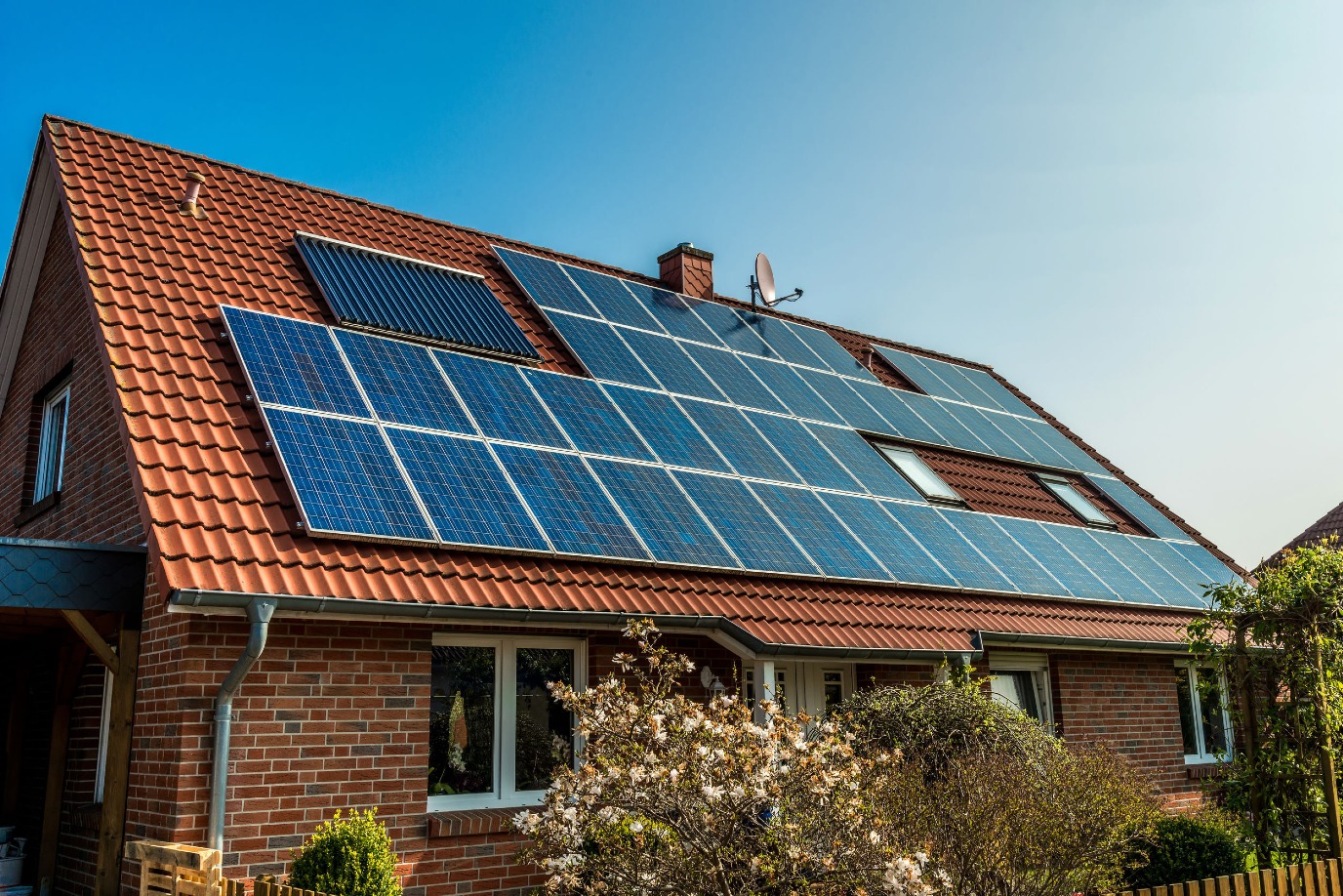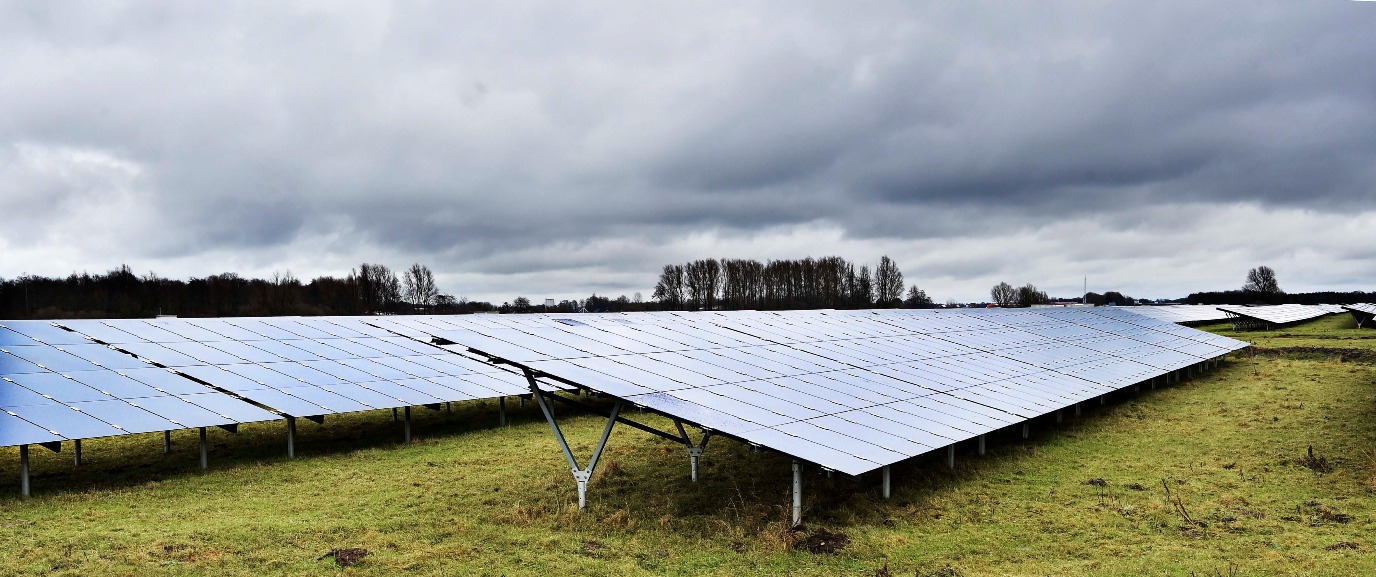Overcoming grid congestion: ‘Making better use of what we already have’

Grid congestion poses a major problem. There is little to no capacity to connect new households and businesses to the power grid and it risks halting the energy transition. Michele Cucuzzella, Associate Professor of Energy Systems & Nonlinear Control, researches how we can use our current energy infrastructure more efficiently. Recently, he also joined the Jantina Tammes School and the Wubbo Ockels School, where he focuses on the ‘twin transition’ — the interplay between the digital and energy transitions.
Text by Jelle Posthuma
Cucuzzella clearly remembers the moment his parents installed their first solar panels at their home on the island of Sicily, Italy. It must have been sometime in 2010. ‘Nowadays, the notion that the sun produces energy is very common. But when I was still in high school, it was something special. I thought that the technology was extremely fascinating and closely monitored the energy yield from our solar panels. “What if everyone installed solar panels on their roofs?” I wondered. Then, there would be plenty of energy. At the time, I didn’t realize that something like that could actually cause a problem.’
‘Making use of what we have’
Michele Cucuzzella refers to grid congestion, or the overloading of the energy network. Currently, our power grid is not prepared to handle the large supply of energy, green or otherwise. ‘Just the other day, I had a meeting with a representative from the Municipality of Groningen. During this meeting, they showed me a map of the city and its surroundings, with almost exclusively red and orange areas, and only the occasional green spot. Red indicated a congested area: in these zones, it is hardly possible to connect new households or businesses to the grid.’
Building a completely new power infrastructure, for example with more cables and converters, is invasive and immensely expensive, the academic continues. ‘This has to be done eventually, but it cannot be done all at once. Alternatively, we can make better use of what we already have.’ According to Cucuzzella, applying ‘control and optimization theory’ is an important way to achieve this.
Optimize existing energy systems
Cucuzzella has a background in industrial engineering, focusing on energy. In 2024, he was appointed Associate Professor of Energy Systems & Nonlinear Control at the University of Groningen. As a ‘control engineer,’ Cucuzzella uses smart models and algorithms to optimize existing energy systems, but he also uses them, for example, to improve traffic. Congestion can also occur in traffic, such as traffic jams or the search for charging stations for electric cars.
In the field of energy systems, the Associate Professor mentions factories from different companies coordinating their production, thereby better distributing energy demand. Households can also plan their energy consumption more efficiently, he adds. In a well-insulated house, for example, you can switch on the heat pump in the afternoon instead of in the evening, when power demand is highest. ‘Heat accounts for approximately 70 percent of our energy consumption, and in this regard, there is still much to optimize.’

Human behaviour is key
It is not just about optimizing existing technology but also about influencing human opinions and behaviour. ‘When it comes to people, terms such as “controlling” and “optimizing” don’t sound very pleasant,’ the researcher is quick to point out. ‘Designing behavioural interventions to guide human opinions and behaviours towards specific goals fundamentally aligns with control theory. With our research, we also aim to model human behaviour and opinions, and design behavioural interventions. We do this in close collaboration with the Environmental Psychology research group at the University of Groningen.’
A quick and effective way to influence human behaviour is through subsidies, he continues. In the long term, however, providing information, for example through education or ad-hoc campaigns, is considered more effective. ‘We don’t only want to research how people can better adopt existing technology, but also how policies, dynamic pricing, nudging, and other behavioural interventions can encourage more sustainable energy use. A key insight is that people often want to act sustainably but may need guidance or incentives to do so. The question is how to effectively support and encourage people to make more sustainable choices.’
The goal is optimizing the use of existing technology and promoting awareness of energy consumption patterns, Cucuzzella states. ‘Smart algorithms, for example, can help optimize heat pump usage — not necessarily by reducing consumption, but by shifting it to more optimal times. Encouraging such adaptations supports a more balanced and efficient energy system.’
Energy storage
The ultimate goal is to link different energy systems together, for example, across the entire province of Groningen. According to Cucuzzella, it is crucial to use both existing and emerging technologies to better store energy. He explains that excess electricity can be converted into hydrogen via electrolysis, stored, and, when needed, reconverted into electricity using fuel cells.
As part of this transition, Groningen hosts the Hydrogen Valley, a leading European initiative developing a fully green hydrogen ecosystem for energy storage and industry. Excess electricity can also be stored as heat in district heating networks such as WarmteStad, which already utilizes residual heat from data centres and solar heat from solar thermal park Dorkwerd. These solutions help to efficiently balance energy supply and demand.
Simulating with ‘digital twins’
Testing is indispensable when deciding on a strategy for the future. However, Cucuzzella stresses that this cannot be done using the ‘real’ grid. ‘What if something goes wrong? If the grid breaks because of our testing, the impact would be enormous.’ The solution is a so-called digital twin, he explains.
This virtual representation of the energy grid allows researchers to test different scenarios, creating a kind of laboratory for the energy infrastructure. ‘We could research, for example, the best combination of solar panels, wind turbines, and other energy sources, how we can configure our energy systems optimally, and what energy storage solutions would work best. It would be great if we could build something like that for the city of Groningen.’
Cucuzzella researches the models used for these ‘digital twins’. These models are based on physics and data. ‘For example, we want to know exactly how a heat pump works and how to use the machine most efficiently. The same applies to human behaviour and opinions. We can simulate different scenarios using the “digital twin”, determining the best “control” strategy.'

Twin transition: risks and opportunities
Recently, Cucuzzella became coordinator of the ‘twin transition’ theme at the Jantina Tammes School and the Wubbo Ockels School. Twin transition highlights the interplay of digital technologies and energy systems in the transition to a sustainable society. Cucuzzella is aware that the use of digital technology is both an opportunity and a threat.
An example of this is artificial intelligence: on the one hand, it is a major consumer of energy, but on the other hand, AI plays a crucial role in making predictions that can optimize energy efficiency. He stresses that AI should not be used to control systems. ‘It is not sufficiently robust for that. But it doesn’t have to be 100 percent accurate for predictions. If we can optimize our energy efficiency at least partially, that’s already a win.’
In the coming years, Cucuzzella aims to collaborate with the Schools to gather information. ‘Based on this, we will develop a roadmap for the twin transition in the province of Groningen.’ Cucuzzella dreams of creating fully autonomous energy systems. This could lead to significant improvements in comfort, efficiency, sustainability, and affordability of energy. ‘It is important that this is tailor-made. Everyone has their own needs: one person may set the temperature to 19 degrees, while for others, that would be too cold. It’s crucial that people don’t lose control and can set their own boundaries.’
More information
More news
-
20 November 2025
New conductive hydrogel is as soft as the brain
-
20 November 2025
What if we would classify mental disorders in a different way?
-
18 November 2025
Rockets, robots, and regulations
